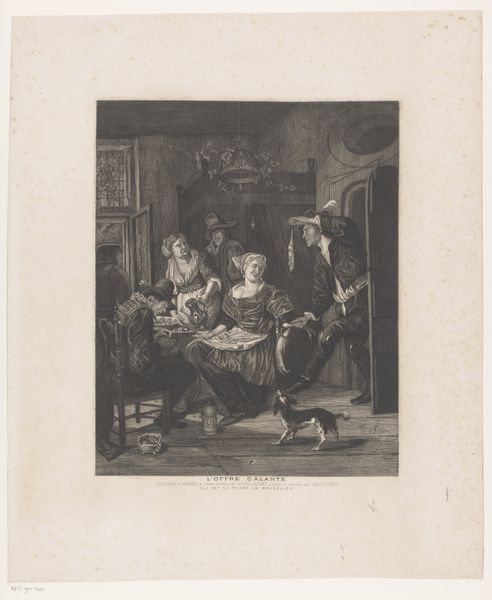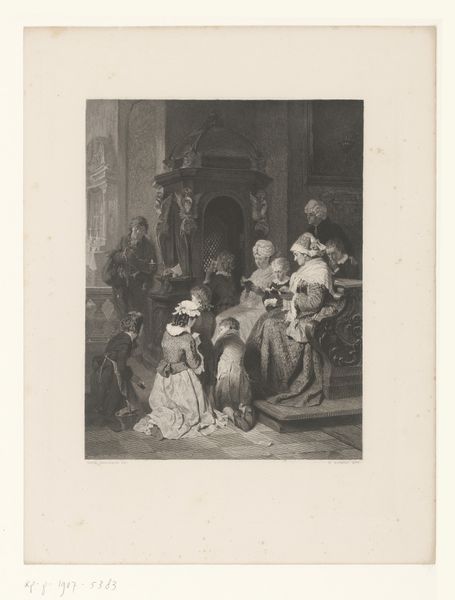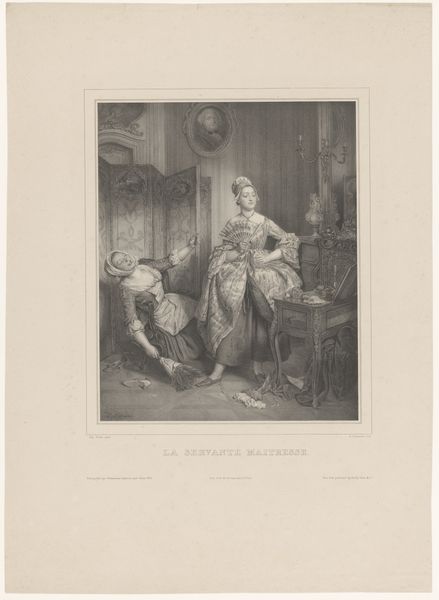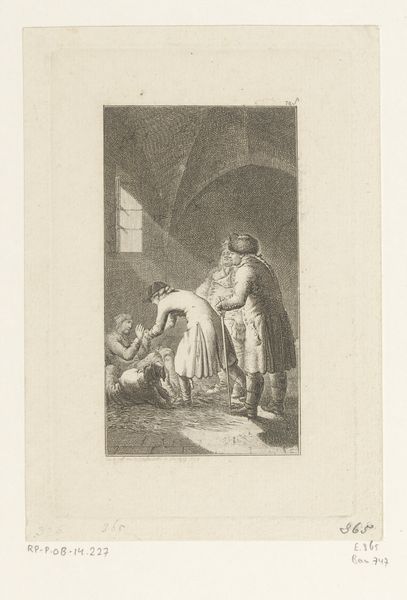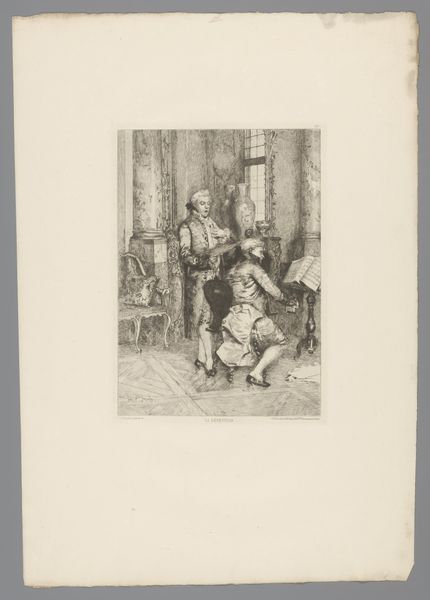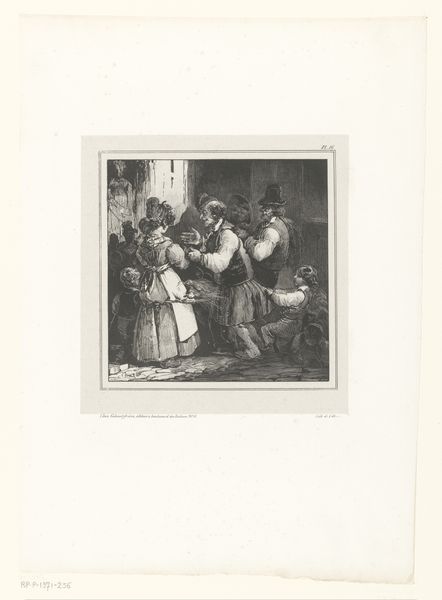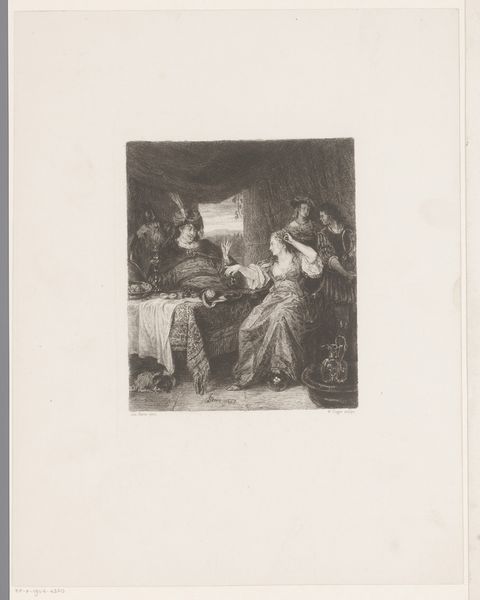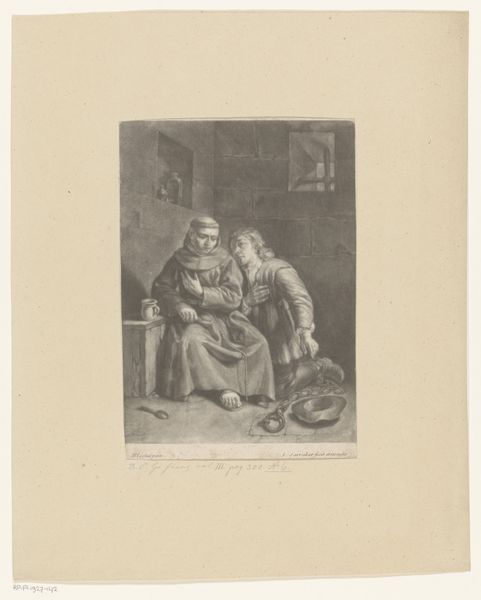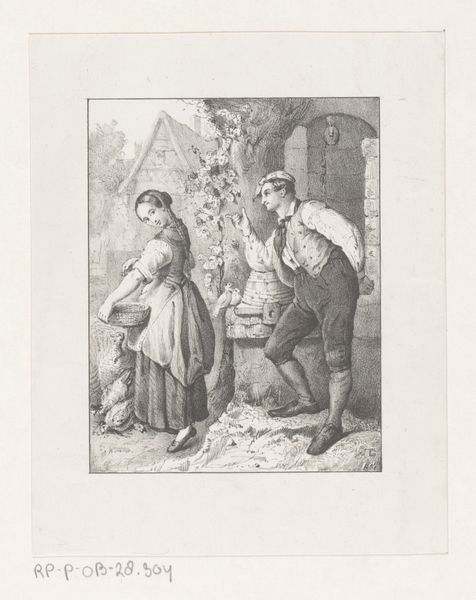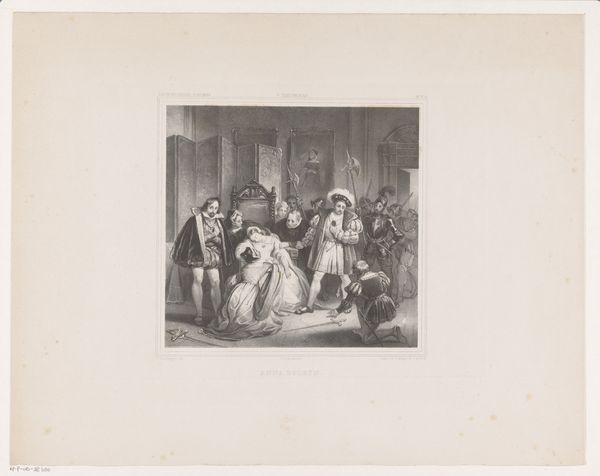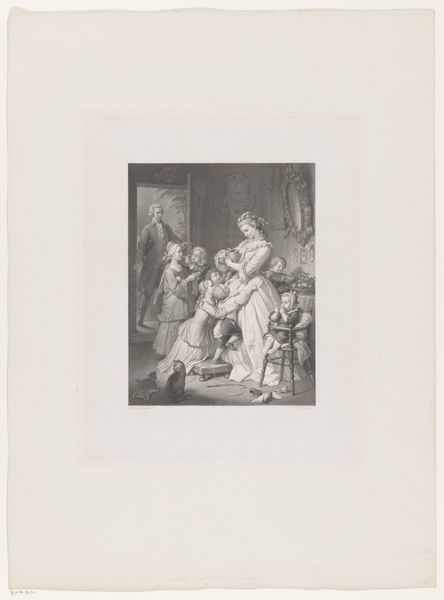
Interieur met Frans I van Frankrijk, Keizer Karel V en de hertogin van Étampes 1872
0:00
0:00
drawing, print, etching, pencil
#
portrait
#
drawing
# print
#
etching
#
charcoal drawing
#
pencil drawing
#
pencil
#
genre-painting
#
history-painting
Dimensions: height 260 mm, width 205 mm
Copyright: Rijks Museum: Open Domain
Curator: At first glance, this print feels both intimate and a bit tense, wouldn't you say? Editor: It does. It's quite dark, and the poses feel theatrical, as if we've walked in on a staged scene. What can you tell me about it? Curator: This is "Interieur met Frans I van Frankrijk, Keizer Karel V en de hertogin van Éstampes", or, "Interior with Francis I of France, Emperor Charles V, and the Duchess of Étampes" made in 1872. The artist, Léopold Flameng, employed an etching technique to bring this historical moment to life. It offers us a glimpse into the complex dynamics of power, influence, and perhaps even veiled political intrigue at court. Editor: The artist certainly masterfully uses shadow and light to emphasize those dramatic elements. The figure on the bed—presumably the Duchess—is framed by soft light, whereas the two men stand almost aggressively upright in stark contrast. What historical context is relevant here? Curator: Well, the Duchess held considerable sway over Francis I. The encounter with Charles V, Holy Roman Emperor, suggests a pivotal moment in Franco-Imperial relations, and highlights the duchess' role, possibly influencing policy through her closeness to the King. These depictions play into existing socio-political ideas about feminine influence at the time. Editor: Absolutely. Beyond the historical tableau, I am struck by Flameng's attention to the details within the room, which creates such depth. The fabrics seem rich with detail. The architecture almost claustrophobic. Notice the animal, perhaps a goat, at the woman's feet. It’s all very skillfully wrought, especially given it's a print, giving the impression of a more richly textured drawing. Curator: Exactly. Consider the way Flameng utilizes etching to recreate this interior and imagine it for a new audience. It is meant to transport the viewer. While historical accuracy may be questioned, the visual storytelling and social commentary are striking and provide insight to late nineteenth-century perceptions of their predecessors. Editor: A beautiful print that certainly gives us plenty to think about. Thanks for putting it in perspective. Curator: My pleasure. It's these intersections of art and power that really resonate.
Comments
No comments
Be the first to comment and join the conversation on the ultimate creative platform.

